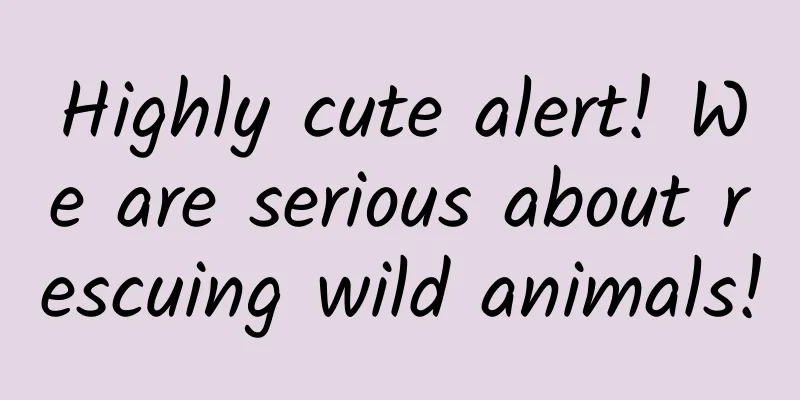Highly cute alert! We are serious about rescuing wild animals!

|
The Oriental White Stork is an endangered species in the world and a national first-class protected wild animal. It is known as the "national treasure of the bird world" and the "giant panda of birds." Recently, we had the honor of participating in and successfully completing the rescue operation for two Oriental white storks. During the long and arduous rehabilitation period, we always insisted on promoting their recovery in the most natural way. Finally, the two Oriental white storks spread their wings and soared under the attention of everyone, and successfully returned to their original home. PART/1 Two Oriental White Storks in Seamless Connection On January 25, we had just released an Oriental White Stork and had just cleaned and disinfected the room when we seamlessly received another Oriental White Stork rescued from Gaochun. Compared with the previous Oriental White Stork, this one was in much worse condition. When the rescuers found it, it was unable to stand in the swamp and was in a very poor mental state. For this animal with no obvious external injuries and in a relatively weak condition, the staff of the veterinary hospital first took detoxification + fluid rehydration + warming measures for initial rescue. The newly rescued Oriental white stork After being tested for avian influenza at the veterinary hospital, the Oriental White Stork was transferred to our rescue center. When it was brought in, it could barely stand, but it was still shaky and not stable. By touching its keel, we preliminarily determined that this Oriental White Stork was not very weak. We guessed that it fainted from hunger due to lack of food, so we first adopted the method of rehydration to replenish its energy, twice a day in the morning and evening. At the beginning, it was so weak that it would fall down when covered with a towel, but later it could dodge and resist, its strength increased, and its mental state gradually improved. We were relieved and preliminarily assessed that this Oriental White Stork could be released into the wild. But we didn't expect that we would face another big problem: this Oriental White Stork was unwilling to eat on its own initiative. PART/2 The problem of Oriental white stork refusing to eat There are many reasons for the temporary refusal to eat of Oriental White Storks during the rescue process. For example, the rescued Oriental White Storks have a poor appetite in the early stages of recovery. It may also be due to changes in the environment, such as the sudden transition from a natural environment to an artificial environment, which makes them nervous and uneasy, affecting their normal eating habits. It may also be due to undetected health problems, such as digestive system diseases, oral diseases, etc., which may also cause them to be unwilling or unable to eat normally. In this case, rescuers need to pay close attention to the behavior and health of the Oriental White Stork, try to adjust the feeding method (such as trying live bait, simulating natural predation scenes, etc.), and create a quiet and comfortable environment to reduce its tension. After making sure that the Oriental White Stork had no health problems, we began to try various methods to get it to eat on its own initiative. Every day, pots of fresh loaches are lined up in front of it, but it is not interested at all. We tried throwing the loach to its feet again. The twisting loach really attracted its attention, but it picked it up and swung it around without swallowing it. In the end, the loach slipped away, but it still remained motionless. After that, we kept trying fish of various types and sizes, big and small, alive and dead. We tried everything we had at our rescue center, and it would hold them in its mouth from time to time. However, according to the surveillance video and the remaining number, it still didn't eat any fish. This situation made us rescuers very anxious. Our goal in rescuing wild animals is not only to restore their health, but also to allow them to return to the wild. For a migratory bird that will migrate in March, there is less than a month left for rescue, so the time left for us is too tight! Since the Oriental White Stork is a proud and sensitive bird, force-feeding is difficult to work for it, and it often spits it out right after being fed. You can't feed it too much at a time, only one or two, and let it swallow it by itself, and then the rescuer will leave quickly; Because it doesn't eat much fish, it still needs to continue to replenish fluids and take sugar water orally to provide it with energy and water, lubricate its digestive tract, and let it get used to the feeling of swallowing; PART/3 Find a dining companion for the Oriental White Stork In order to stimulate the appetite of the Oriental White Storks, we racked our brains and tried various innovative methods. Considering that the interaction between animals may have a positive effect on stimulating appetite, our old employee, Mr. White Duck, once again went on a business trip to the Oriental White Storks' house as part of the dining atmosphere team. Faced with the white stork's loss of appetite, our teacher the big white duck did not panic at all and started his life of eating Ku Ku Gan rice. White Duck Teacher trying to eat the camera Perhaps it was because after ten days of rescue, the Oriental White Stork had let down its guard against this environment, perhaps the fresh fish finally aroused the Oriental White Stork's appetite, or perhaps it was because of the atmosphere of the Big White Duck teacher. In short, with a combination of measures, the Oriental White Stork finally began to eat on its own initiative. This is a positive sign of recovery, meaning that the Oriental White Stork's physiological functions are gradually recovering. When the surveillance camera saw this scene, we finally felt relieved. In this way, we not only use scientific methods to provide humane rescue and solve practical problems, but also provide us with valuable experience for dealing with similar situations in the future. In general, rescue requires more scientific methods and more attempts, as well as collaboration among multiple parties, and a scientific and rigorous attitude to ensure the effective implementation of each link. Next, we will work hard to release the Oriental White Stork as soon as possible! PART/4 Oriental White Stork successfully released Before releasing the Oriental White Storks, our professionals conducted a comprehensive inspection of the Oriental White Storks, but until the final release, we were still full of worries. For large birds such as the Oriental White Stork, their natural living habits and survival needs determine that they need a vast sky and a rich wetland ecosystem to reproduce and thrive. Although the artificial environment can provide them with a certain amount of flying space, the diversity and complexity provided by the outside world are incomparable to the vast natural environment. Therefore, for the protection of rare and endangered species such as the Oriental White Stork, in addition to the necessary rescue and rehabilitation, it is more important to release it back to its native environment so that it can fully display its nature in its native environment and enjoy the vast world that truly belongs to it. This is also the core of the concept of wildlife conservation, which is to reduce human intervention as much as possible so that species can self-regulate and thrive in their natural state. The time and place of release are usually carefully selected. Generally speaking, if the rescue location is known, it will be released back to the rescue location; secondly, a wetland reserve with excellent water quality, abundant food and good ecological environment will be selected, which is conducive to the rapid adaptation and integration of the Oriental White Stork into the original population. After a whole month of careful rescue, we finally released the Oriental White Stork before its migration in March. We drove all the way to Gaochun, where it was rescued. The water in the lake had risen, and large areas of the beach had been flooded. The Oriental White Storks that had gathered had also dispersed, and it seemed that there were fewer of them than a month ago. After finding a lakeside with several Oriental white storks in sight, the staff opened the cage door, and the Oriental white storks shook their feathers and flapped their wings to fly high. Oriental white stork flaps its wings and flies high When the Oriental White Stork, which we had carefully cared for and successfully recovered, finally spread its wings and flew towards the distant sky, our feelings at that moment were indescribable, filled with deep excitement and relief. This moment not only reflects the beautiful vision of harmonious coexistence between man and nature, but also marks the important achievements in biodiversity conservation. Through scientific rescue and release, we not only save the lives of individuals, but also make positive contributions to the reproduction and survival of the entire species. Perhaps the best gift and blessing for wildlife rescue is: freedom. |
>>: Hydrogen energy, it’s not easy to say I love you
Recommend
5 methods to teach you how to effectively improve retention rate, TikTok and PUBG are using them!
This article will discuss in detail how to system...
NetEase Cloud Music is all over the news again. Can these hit stories really be replicated?
We know that for an H5 or activity to be popular,...
The entire process of live streaming with goods on Douyin!
In addition to the popularity of short videos, li...
Analysis of 5 aspects: pain points and opportunities in mutual finance operations
There don't seem to be many articles on Inter...
It has gone through a lot of hardships and traveled 8 billion light years to see you
Fast radio bursts (FRBs) are mysterious radio ast...
Price inquiry for development of Zhengzhou aquatic products mini program. How much does it cost to develop Zhengzhou aquatic products mini program?
How much is the quotation for Zhengzhou aquatic p...
Lu Mingming · Xiaohongshu Hot Fan Training Class 5.0, help you easily play Xiaohongshu platform worth 1380 yuan
Lu Mingming · Xiaohongshu Fan Training Class 5.0,...
Case analysis of programmatic creative delivery of information flow advertising!
This is the best era. With the support of AI, inf...
Attracting 5.6 million viewers in one hour? Watch Baidu Mobile Assistant play "different live broadcast"
Almost overnight, beautiful internet celebrities b...
China Automobile Dealers Association: Pickup Truck Market Analysis Report in October 2020
According to data from the China Automobile Deale...
What are the essential factors for Tik Tok promotion?
From Haidilao to Daancha, Douyin has demonstrated...
【ASO Optimization】Three tips to help you get into the App Store’s recommended catalog!
Before reading this article, you need to make sur...
Commercialization and monetization guide: How to improve the eCPM of information flow advertising?
Information flow advertising is almost a must for...
Experience of using Xiaotiancai phone watch: Who wants it more, the baby or the parents?
It is said that it is easy to make money from chi...
A growth experiment that increased product conversion rate by 30%
The steps for conducting growth experiments are g...









